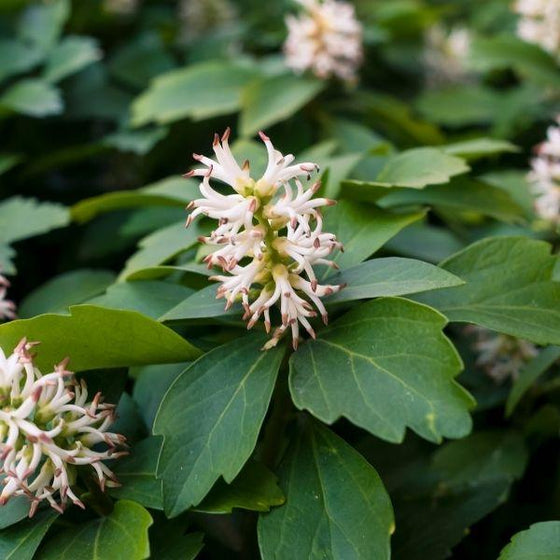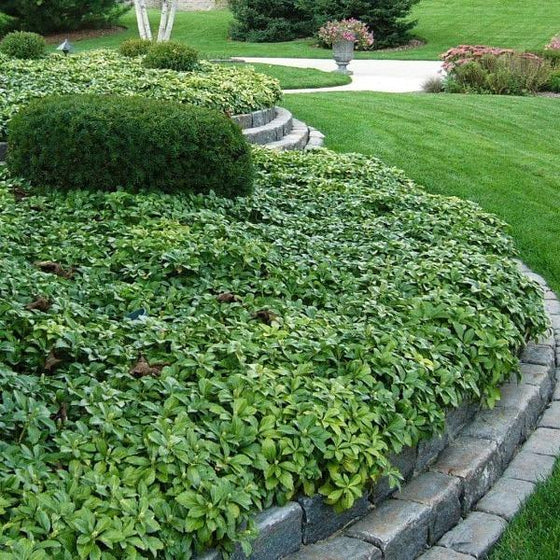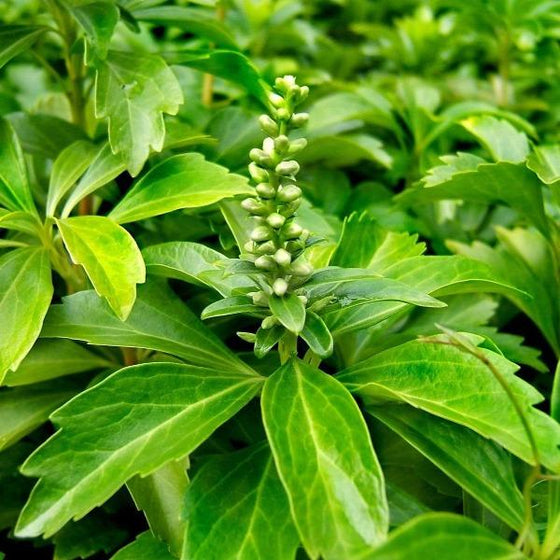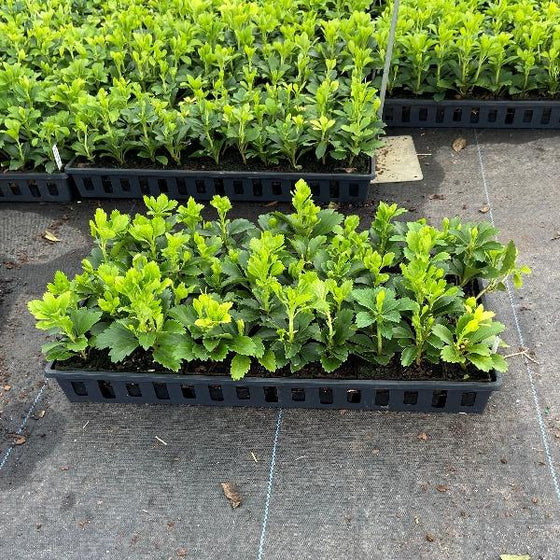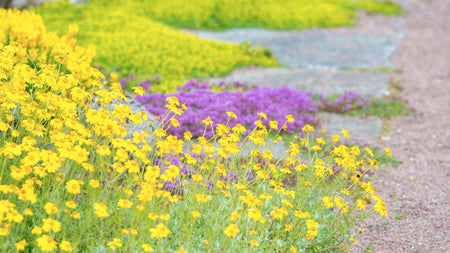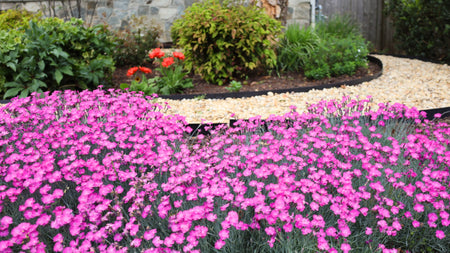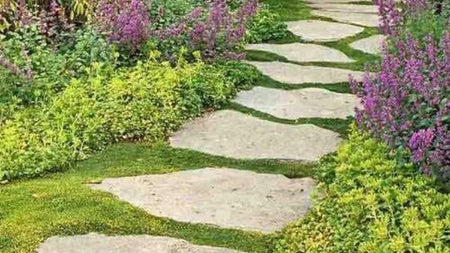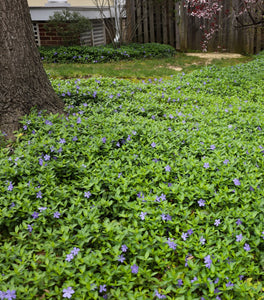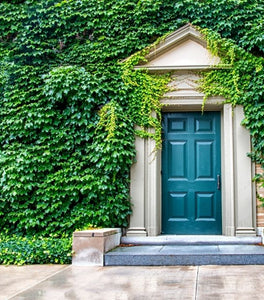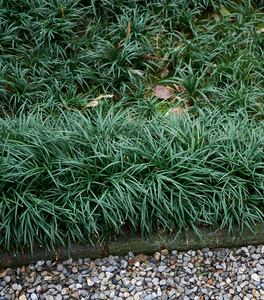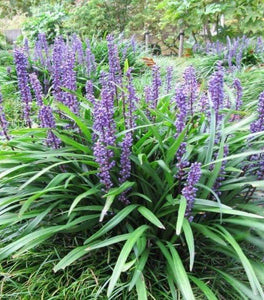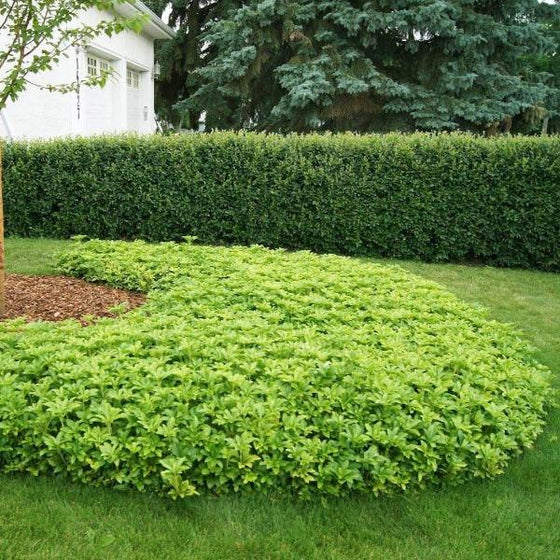
Images Depict Mature Plants
The Classic Evergreen Groundcover for Shady Gardens
A Reliable Carpet of Green
Pachysandra terminalis, also known as Japanese Spurge, is a timeless, evergreen groundcover that thrives in areas where few other plants will grow. Its glossy, dark-green leaves form a dense mat of year-round foliage that instantly transforms bare, shaded ground into a lush carpet. Small, white flowers bloom in the spring, adding subtle beauty and providing pollinator value.
Perfect for Hard-to-Plant Areas
Growing only 8–12 inches tall, Pachysandra spreads by rhizomes to create a seamless ground cover that suppresses weeds and stabilizes the soil. It thrives in shade to partial shade and is ideal beneath trees, along woodland edges, and in shaded foundation beds where grass won’t survive.
Low-Maintenance and Deer-Resistant
This hardy perennial is both deer- and rabbit-resistant, remaining evergreen even in cold winters. Once established, it’s drought-tolerant and nearly maintenance-free, requiring no mowing or frequent trimming. Plant once and enjoy a dependable, living mulch that looks good year-round.
A Designer Favorite for Texture and Contrast
Pachysandra’s rich green color pairs beautifully with hostas, ferns, and heucheras. Whether planted en masse for uniform texture or used as a soft edging along paths, it creates structure, color, and calm continuity in shaded landscapes.
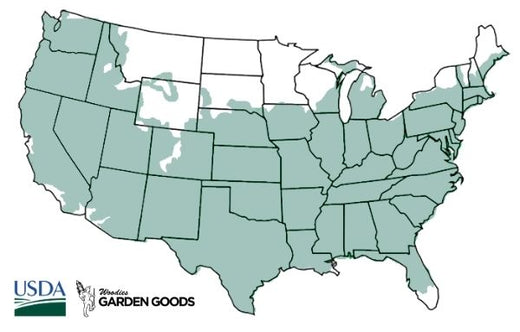
| Botanical Name | Pachysandra terminalis |
|---|---|
| Hardiness Zone: | 5-9 |
| Mature Height: | 8 to 12 inches |
| Mature Width: | 1 to 1.5 feet per plant |
| Sunlight: | Partial to Full Shade |
| Water Requirements: | Moderate; drought-tolerant once established |
| Soil: | Moist, well-drained, slightly acidic soils |
| Bloom Time / Color | Spring / White |
| Resistance | Deer- and rabbit-resistant |
| Landscape Uses | Groundcover, under trees, borders, shaded slopes |
How to Care for Pachysandra (Japanese Spurge)
After you buy Pachysandra terminalis online from Garden Goods Direct, follow the planting and care instructions below for the best outcome:

How should I plant Pachysandra?
To plant Pachysandra, select a site with rich, well-draining soil and dappled to full shade. Loosen the soil and amend it with organic matter or compost to encourage strong root development. Dig a hole twice as wide as the root ball but not deeper, then place the plant so the crown is level with the soil surface. Backfill with native soil, firm gently, and water thoroughly to settle. For larger areas or mass plantings, space Pachysandra 8–12 inches apart. This allows room for spreading while still achieving solid coverage within two growing seasons. Applying a light layer of mulch will help retain soil moisture and prevent weed competition during establishment.
How often should I water Pachysandra after planting?
Water deeply two to three times per week during the first growing season to encourage deep roots. Ensure that the soil remains consistently moist but never soggy, as excessive moisture can lead to root rot. In heavier soils, improve drainage by mixing in organic matter before planting. Once established, Pachysandra is moderately drought-tolerant and usually thrives on natural rainfall. During extended dry periods, provide supplemental watering once every week or two to keep the foliage lush and vibrant.
When should I fertilize Pachysandra?
Feed Pachysandra once in early spring with a balanced slow-release fertilizer (such as 10-10-10) or apply an organic compost dressing to enrich the soil naturally. Fertilizing in spring supports fresh growth after winter dormancy and encourages denser coverage through the growing season. Avoid high-nitrogen lawn fertilizers near Pachysandra beds, which can lead to excessive top growth and leaf burn. Over time, an annual compost top-dressing will keep your groundcover vigorous without synthetic inputs.

When and how should I prune Pachysandra?
Prune or shear Pachysandra lightly in early spring before new growth appears to remove any winter-damaged leaves and maintain uniform height. Use sharp shears to trim no more than one-third of the plant’s height to avoid stress. For rejuvenation, older clumps can be thinned by digging and dividing sections every 3–4 years. This improves air circulation and keeps the groundcover dense and healthy, particularly in shaded, humid climates.

